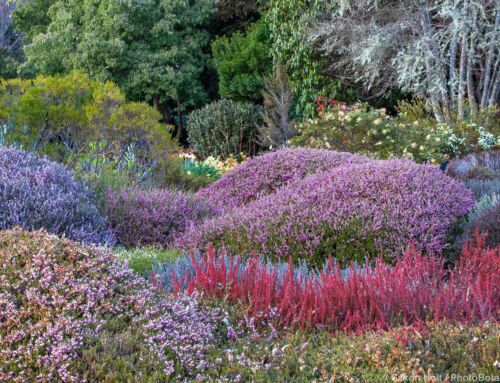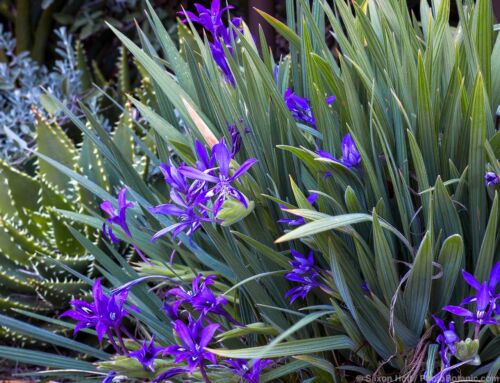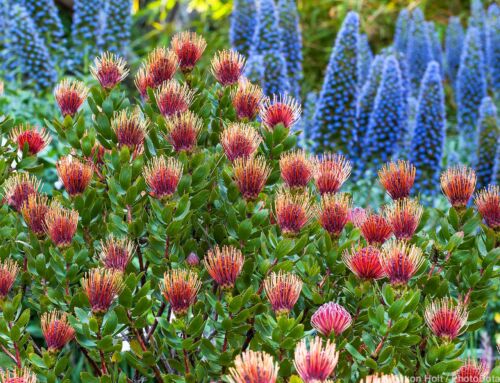California grape (Vitis californica) is a large, fast-growing, deciduous vine that provides quick summertime privacy and shade as well as brilliant yellow, orange, or red fall color. In summer or fall, the lush foliage is thrilling when backlit by afternoon sun.
Native to riparian areas of California and Oregon, this headstrong vine grows thirty feet tall and wide with its preferred regimen of shaded roots, tops in full sun, and moderate summer water. Vines climb by tightly twining tendrils that stand firm against the most determined pulling and will advance high into trees and smother nearby shrubs if unrestrained.
Happily, this rampant tendency can be harnessed to benefit the gardener. One or two plants can be counted on to cover the largest trellis, fence, arbor, or shadehouse in three to five growing seasons. Growth can be restrained with restricted summer watering and vigilant pruning.
Summer watering is a balancing act, as monthly deep watering – twice monthly or weekly inland – usually is required to avoid early dropping of leaves, which means loss of the glorious autumn show. Mulch the base of the plant to conserve moisture and water only as needed to offset early morning wilting. Afternoon wilting of the large leaves is expected in the hottest weeks of summer.
California grape provides cover and food for birds and other wildlife. Deer may browse the leaves and new stems. Fruits are edible and tasty but have large seeds and little pulp. Fruits hang on the vine until they are eaten by birds or turn into raisins, and leaves drop cleanly in fall.
There are several named varieties of California grape. Surely the most vigorous and striking is ‘Roger’s Red’, with apple green leaves that turn bright scarlet in fall.






Will California grape color up in San Diego? I have a wall which needs to be covered and I would love to see fall color there.
Stella, I’m so sorry. This comment was not forwarded to me. I just discovered it. I haven’t grown Roger’s Red in the south, but I think it would show its colors there. Possibly not as brilliantly as where it gets colder, but color starts to show up in warm weather, so it may be dependent on day length rather than temperature. If you are putting it against a wall, though, you will need to provide something for it to climb on. It climbs by tendrils, which hang on to anything in its path, especially nearby shrubs and trees!
Nora